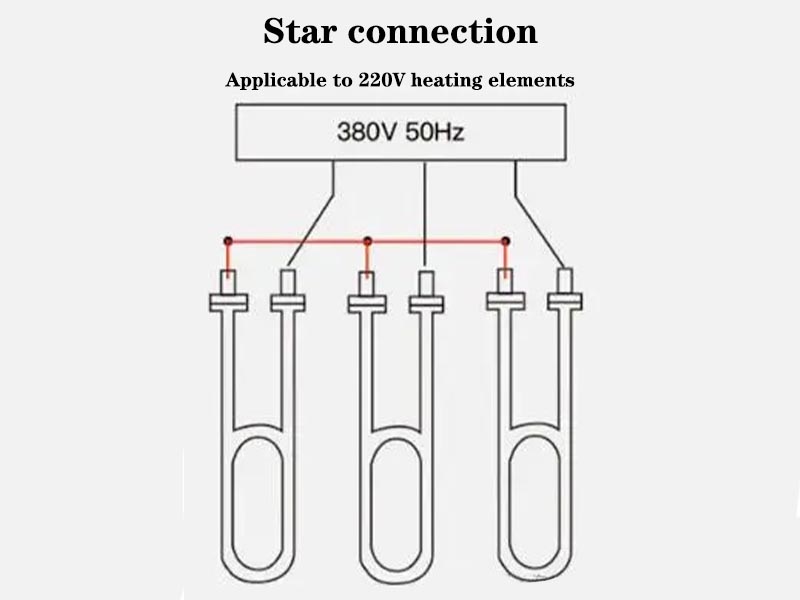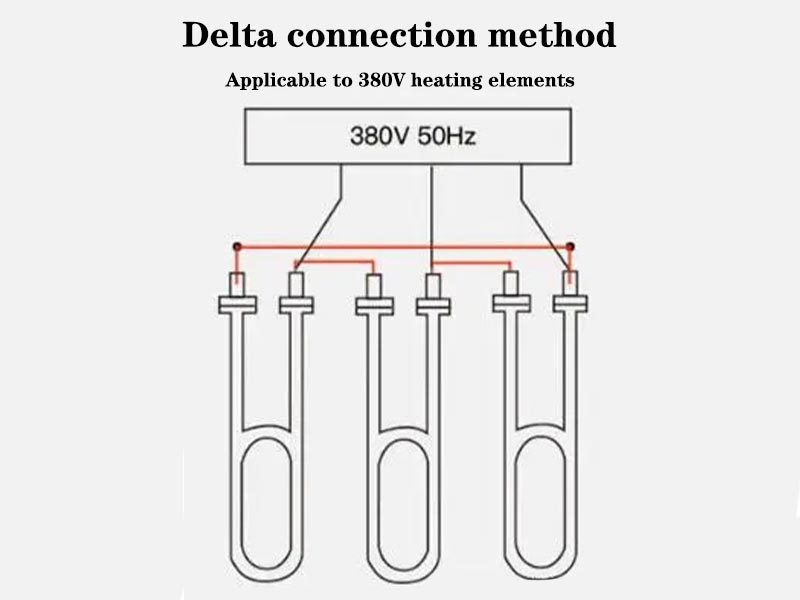Introduction
Stop struggling with wiring three heating elements! This step-by-step tutorial demystifies 220V star (Y) and 380V delta (Δ) connections with detailed diagrams and critical safety protocols. Master professional techniques and start your project confidently today!
Industrial and residential heating systems frequently use triple heating elements, yet many face confusion when connecting them to 220V or 380V power sources. This comprehensive guide provides foolproof wiring methods, illustrated with original diagrams for instant clarity.
I. Critical Preparations Before Wiring
Two non-negotiable checks before starting:
- Element Rated Voltage
Verify each element’s stamped voltage rating (commonly 220V or 380V). This dictates wiring configuration. - Power Supply Specification
Confirm whether your source is 220V or 380V. Mismatched voltage will damage elements and cause safety hazards!
Tools & Materials Checklist:
- Screwdriver
- Insulation tape
- Terminal blocks
- Multimeter (for circuit verification)
II. Wiring to 220V Power: Star (Y) Connection
Use this method when all three elements are rated for 220V. Ensures stable 220V across each element.
Step-by-Step Procedure:
- Terminal Labeling
Label one end of each element as A1/B1/C1, the opposite ends as A2/B2/C2. - Create Neutral Point
Connect A2, B2, and C2 with wires to form a central neutral point.- Ideal: Connect neutral point to a neutral line (if available).
- Alternative: Leave unconnected (reduced system stability).
- Connect Phase Lines
Wire A1, B1, and C1 to three 220V phase lines.Note: For single-phase 220V systems, connect only one phase line (rare in practice due to load imbalance).
▶︎ Secure connections thoroughly and insulate joints. - Verification
- Test element voltage with multimeter: ~220V.
- Power on and observe operation.
III. Wiring to 380V Power: Delta (Δ) vs Star (Y) Methods
Option 1: Delta (Δ) Connection (For 380V-Rated Elements)
Maximizes element performance at rated voltage.
Procedure:
- Label Terminals
Mark all element ends as A1/A2, B1/B2, C1/C2. - Serial Linking
Connect:- A2 → B1
- B2 → C1
- C2 → A1
(Forms closed Δ loop)
- Connect Phases
Link the Δ’s vertices (A1, B1, C1) to three 380V phase lines. Insulate all contact points. - Testing
Confirm voltage: ~380V across each element. Validate heating function.
Option 2: Star (Y) Connection (For 220V Elements on 380V Supply)
Reduces voltage to protect lower-rated elements.
Procedure:
- Establish Neutral Point
Connect one end of all elements together.- ESSENTIAL: Ground the neutral point (non-negotiable for 380V safety).
- Connect Phase Lines
Wire remaining ends to 380V phase lines. Each element receives ~220V.
IV. Mandatory Safety Protocols
⚠️ Non-negotiable precautions:
- Power Off Before Wiring
Never work on live circuits – electrocution risk! - Component Specifications
Use wires and terminals rated for the operating current. - Routine Inspections
Check for insulation deterioration, damage, or corrosion monthly. - Consult Professionals
If inexperienced, hire licensed electricians. Incorrect wiring causes fires!
Conclusion
You’ve mastered both 220V (Y) and 380V (Δ/Y) connections for triple heating elements. Apply these techniques confidently using the diagrams and safety guidelines.
Need further support? Share your installation questions below or request other electrical engineering topics. Don’t forget to like and share this guide if it empowered your project!






